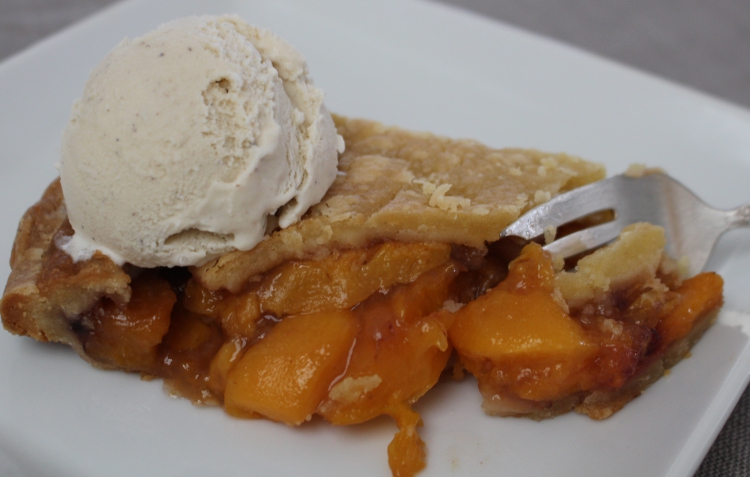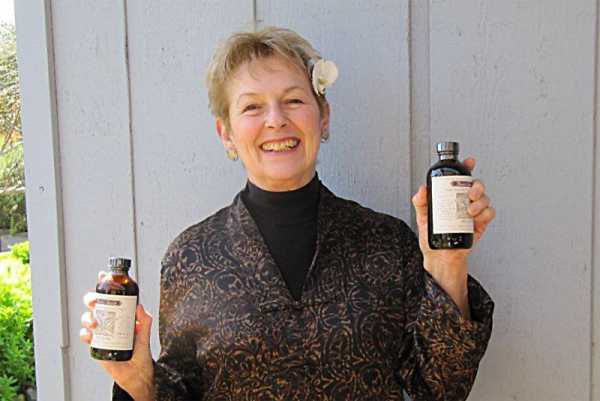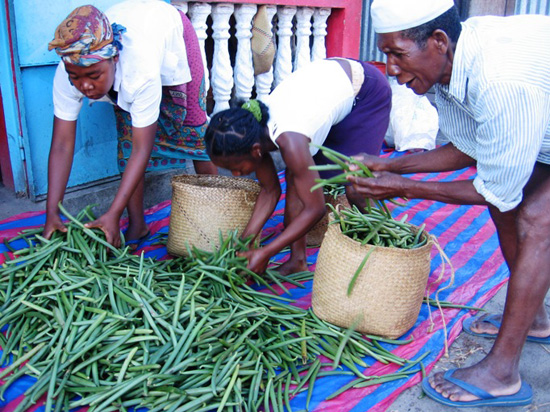
I'm amazed at how superior your vanilla is!
– Des, The Grommet
Given that I’ve been living with the last vestiges of a cold as well as chilly nights and mornings, a broth-rich poultry soup is potent medicine. I made enough to last a week. My assistant, Gina, my tenant and my next-door neighbor have gratefully accepted bowls.
As I was chopping vegetables and sautéing onions, I wanted to write about it, but I wondered how turkey soup might fit it in a blog on the tropics. Silly me: where did I think turkeys originated? It’s interesting, however, when you think about where our staples came from and how much they’ve traveled the world. So here’s what I realized as I figured where things came from in this particular batch of turkey soup.
Turkeys are as American as apple pie, right from the forests of America. According to William Rubel, an expert on traditional American foods, the first turkeys made it to Spain by 1498, well ahead of many of our other exotic American foods such as chocolate and vanilla. They still roam the hills and woods of America and even the suburbs. A flock of wild turkeys marched down the middle of my daughter’s street a couple of months ago. My three-year-old grandson ran toward them, making loud, shrieking noises, and they scattered like leaves. He was quite pleased with himself.
Butternut squash – originated in Mexico; thicker-skin squashes such as the pumpkin traveled north from South America.
Potatoes are native to the altiplano of Peru.
Corn is native to Mexico and was used throughout Mesoamerica. It traveled to Spain with Cortes and probably with earlier soldiers who were stationed in what is now Cuba. Amazingly, within one hundred years of leaving the Americas, corn could be found in rural areas of China!
Onions are a tough one to determine. Although ancient Egypt has been considered the onion’s origin as there are numerous pictures of onions on papyrus, it appears that versions of onions are native worldwide.
Mushrooms also grow worldwide; though varieties vary, they thrive in both temperate and tropical climates.
While soybeans are native to ancient China, lima beans are native to Guatemala (I happened to have put both into my soup pot).
Peas most probably originated in Northwestern India, Pakistan or parts of the former USSR. They must have been traded early on as there are samples of a primitive variety of peas in archeological digs of Swiss lake dwellers from roughly 5000 years ago.
Spinach came from Persia, celery from the Mediterranean Basin but no one is quite sure where carrots originated. There are both wild carrots and domesticated carrots but it appears the domesticated variety did not originate as the wild carrot and no one seems to know where they began their rooted journey. They’re our “wild card.”
I was surprised that peas and spinach, both cool-weather crops that require a bit of rain, originated in a region known to be dry and quite cold in the winter. I would have guessed somewhere in Europe or the Mediterranean Basin as both spinach and peas are grown along our foggy, temperate Pacific coast.
So, who got the better deal after the Conquest when it came to foods? The Europeans, hands down! While the Europeans had large animals to eat and use for clothing, transportation and work in the fields as well as wheat, rye and barley, The Americans had corn and potatoes, both of which changed the world, a cornucopia of fruits and vegetables, and dare I say it? Chocolate and vanilla!
No chocolate or vanilla in my steaming bowl of turkey soup, but that’s okay. There’s always room for dessert.
I was given a small bottle of Rain’s Choice in a gift basket and I have been hooked ever since. The flavor makes all of my baking so much better! I will never use grocery store vanilla again!


© 2021. All Rights Reserved
Designed/Developed by Kat & Mouse